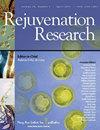Covid-19作为老年人异质性疾病表现的范例模型:来自GeroCovid观察性研究的数据
IF 2.2
4区 医学
Q3 GERIATRICS & GERONTOLOGY
引用次数: 4
摘要
Covid-19可能具有异质性发病,特别是在老年人中。然而,根据社会人口统计学和健康因素,Covid-19体征和症状是否以及如何出现和聚集在一起尚不清楚,也不清楚它们的预后价值。这项工作包括参加GeroCovid观察性研究的981名Covid-19住院患者。系统记录疾病发病时的体征/症状、社会人口统计学、健康状况、认知状况和活动能力。通过聚集的分层聚类来识别体征/症状群集。通过logistic回归和Cox回归探讨单一体征/症状和症状群与住院时间(≥16天)和住院死亡率的关系。我们的样本中报告最多的体征/症状(年龄78.3±9.39岁;发热(62.5%)、咳嗽(45.5%)和呼吸困难(62.7%)。高达三分之一的患者报告为非典型,9.1%的患者报告为谵妄。非典型症状随着年龄的增长和covid -19前认知和活动水平的降低而更常见。老年男性比女性更容易出现呼吸道症状。呼吸困难(HR=1.47, 95%CI:1.02-2.12)、呼吸急促(HR=1.53, 95%CI:1.14-2.07)、低血氧饱和度(HR=1.95, 95%CI:1.32-2.88)和谵妄(HR=1.60, 95%CI:1.13-2.28)与较高的住院死亡率相关。确定了四个症状群。与轻度呼吸道症状组相比,重度临床损害组死亡率更高(HR=2.57, 95%CI:1.58 ~ 4.18)。严重的临床损害和特定症状群与较长的住院时间相关(OR=2.38, 95%CI:1.56-3.63, OR=1.75, 95%CI:1.08-2.83)。多种健康因素影响Covid-19的临床表现。症状聚类方法可能有助于预测老年患者的不良健康结果。除呼吸道症状外,谵妄与死亡风险独立相关。本文章由计算机程序翻译,如有差异,请以英文原文为准。
Covid-19 as a paradigmatic model of the heterogeneous disease presentation in older people: data from the GeroCovid Observational study.
Covid-19 may have a heterogeneous onset, especially in older age. However, whether and how Covid-19 signs and symptoms may present and aggregate together according to sociodemographic and health factors is unclear, as well as their prognostic value. This work included 981 Covid-19 inpatients who participated in the GeroCovid Observational study. Signs/symptoms at disease onset, sociodemographic, health, cognitive status, and mobility were systematically recorded. Clusters of signs/symptoms were identified through agglomerative hierarchical clustering. The associations of single signs/symptoms and symptom clusters with longer hospitalization (≥16 days) and in-hospital mortality were explored through logistic and Cox regressions. The signs/symptoms most reported in our sample (age 78.3±9.39 years; 49.4% women) were fever (62.5%), cough (45.5%), and dyspnoea (62.7%). Atypical were reported by up to one-third of patients, and delirium by 9.1%. Atypical symptoms were more frequent with advancing age and with lower pre-Covid-19 cognitive and mobility levels. Older men more likely reported respiratory symptoms than women. Dyspnoea (HR=1.47, 95%CI:1.02-2.12), tachypnea (HR=1.53, 95%CI:1.14-2.07), low oxygen saturation (HR=1.95, 95%CI:1.32-2.88) and delirium (HR=1.60, 95%CI:1.13-2.28) were associated with higher in-hospital mortality. Four symptom clusters were identified. Compared with the mild respiratory symptoms cluster, the severe clinical impairment cluster was associated with higher mortality (HR=2.57, 95%CI:1.58-4.18). The severe clinical impairment and aspecific symptoms clusters were associated with longer hospitalization (OR=2.38, 95%CI:1.56-3.63, and OR=1.75, 95%CI:1.08-2.83, respectively). Multiple health aspects influence Covid-19 clinical presentation. A symptom clusters approach may help predict adverse health outcomes in older patients. In addition to respiratory symptoms, delirium is independently associated with mortality risk.
求助全文
通过发布文献求助,成功后即可免费获取论文全文。
去求助
来源期刊

Rejuvenation research
医学-老年医学
CiteScore
4.50
自引率
0.00%
发文量
41
审稿时长
3 months
期刊介绍:
Rejuvenation Research publishes cutting-edge, peer-reviewed research on rejuvenation therapies in the laboratory and the clinic. The Journal focuses on key explorations and advances that may ultimately contribute to slowing or reversing the aging process, and covers topics such as cardiovascular aging, DNA damage and repair, cloning, and cell immortalization and senescence.
Rejuvenation Research coverage includes:
Cell immortalization and senescence
Pluripotent stem cells
DNA damage/repair
Gene targeting, gene therapy, and genomics
Growth factors and nutrient supply/sensing
Immunosenescence
Comparative biology of aging
Tissue engineering
Late-life pathologies (cardiovascular, neurodegenerative and others)
Public policy and social context.
 求助内容:
求助内容: 应助结果提醒方式:
应助结果提醒方式:


